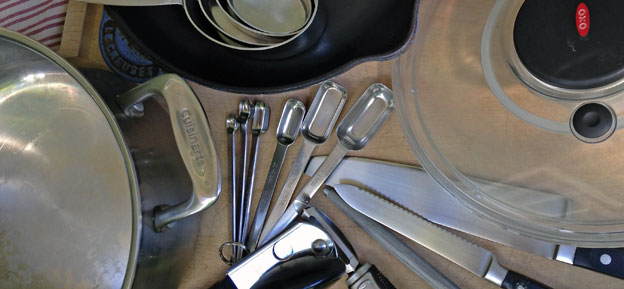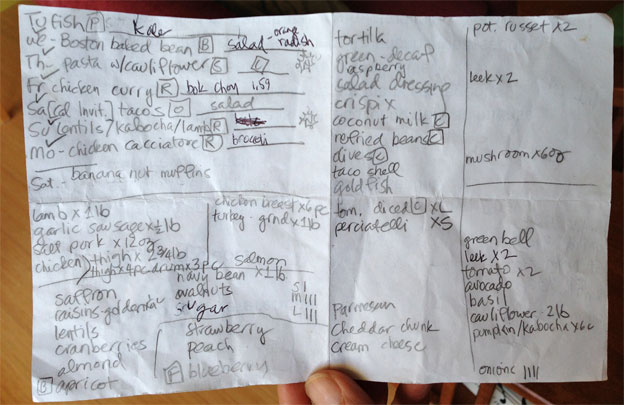We’re in that time of year when resolutions abound. The funny thing is that nobody I’ve talked to personally admits to having any resolutions of their own, but nonetheless, resolutions are floating around out there, like a virus or a deep-seated anxiety. Maybe I was careless about breathing in too deeply as I chatted with my friend over tea? Or when I was washing my hands at the movie theater and eavesdropping on the gossiping and texting teens? Or when I made eye contact with the man behind me at the grocery store? But I caught the New Year’s Resolution bug: the first is to pick up writing again, and the second is to incorporate more whole grains and tofu into my cooking.
Of course, it’s really no bad thing, this aspiration for self improvement, but I know how hard it is to keep up the momentum and create a permanent “new normal.” A handful of general “rules” helps, and I wrote about them in my first posts from 2013. I am applying this process to my own resolutions.
In terms of starting to write again, as you may have noticed, I’ve been on a hiatus from blogging since September. The reasons don’t really matter, the important thing is that I want to start again. My goal is to write 4 times a week for 30 minutes a day. I need to change my habit of doing everything else before I write, so before I check email, or call my mom, or clean the kitchen, I will write. Keeping track of my progress on a spreadsheet will help me visualize my success or need for improvement. If I can meet my weekly writing goal for 6 weeks, then my reward will be a massage (thank you, DH)!

Whole grains and tofu aren’t new in my kitchen, but in 2014, I want to include them regularly in my weekly menus. My goal is to serve tofu and whole grains for dinner, not necessarily at the same time, once a week. At the very least, I want to have brown rice frozen in small(er) servings that I can use any time. I need to be more consistent about using recipe sources I already know about, and I also need to keep an eye out for fresh ideas. I’ll keep track of my progress in my dinner diary. And adding more delicious, healthful dishes to my repertoire is reward enough to keep me motivated (though I wouldn’t mind another massage, hint-hint). These are some resources that I’ve already found useful:
- The Ultimate Rice Cooker Cookbook by Julie Kaufmann and Beth Hensperger (Harvard Common Press). I have the 2002 edition, but there’s a revised 2012 edition. I skimmed the recipe titles of the first six sections of the table of contents, and except for three recipes that have been removed, the 2002 and 2012 editions look the same. I like the basic cooking instructions for many varieties of rice and grains in “The Perfect Pot of Rice” and “The Whole Grain Cooker.” The family loves Basmati Rice with Corn and Peas with brown basmati rice instead of white, and I want to try substituting brown rice in other recipes in “Simple Everyday Rices and Little Meals” and “The Family of Pilafs.”
- Whole Grain Baking: Delicious Recipes Using Nutritious Whole Grains by King Arthur Flour (Countryman Press, 2006). For every day, the sections on quick breads, and biscuits, popovers, and dumplings have some known winners: Honey-Whole Wheat Biscuits and Peach-Oatmeal Bread are mouth-watering, and the Spelt Popovers are already a family favorite. When there’s more time, Dark & Soft Restaurant Dinner Rolls, Whole Wheat Pita, and Wheat Baguettes have been scrumptious. Can’t wait to try other recipes, especially those featuring other types of grains.
- One of the obstacles to eating more tofu has been that I prefer dishes that are at least Asian-based — to me, tofutti and tofurky are just tofunky — and I have only a handful of recipes that we all enjoy. But Martha Rose Shulman, who writes the Recipes for Health column in the New York Times, has some promising possibilities that I’m looking forward to trying. Her Red-Rice or Farro With Miso-Roasted Squash, Leeks, Red Peppers and Tofu, for example, introduced me to red rice, with its appealing brown-red color and nutty flavor. The dish is a beautiful combination of colors, textures, and flavors, and the marinade is equally tasty on tofu and veggies. If her other tofu recipes are just as delish, I’ll have lots of great additions to my recipe box!
Where do you find delicious, easy, healthful recipes featuring whole grains or tofu? What resolutions do you have for 2014? I’ll share my progress as 2014 unfolds. Wish me luck!





